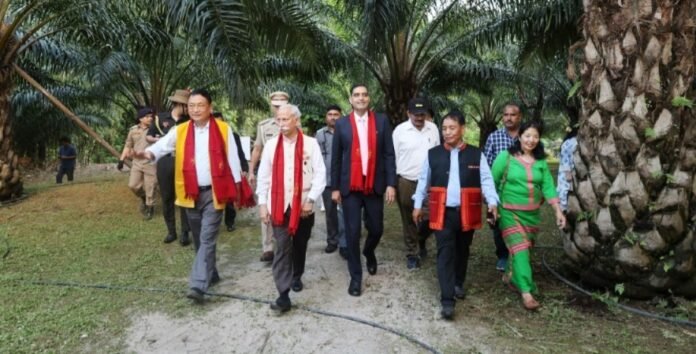Arunachal Pradesh is rapidly turning its green valleys into thriving oil‑palm farms. Governor Lt. General K.T. Parnaik (Retd.) told reporters in Itanagar on Monday that the state has already planted 4,690 hectares of oil palm, helping almost 2,000 farmers grow under the “Per Drop More Crop” program.
He added the state plans to bring 35,723 hectares under oil‑palm cultivation by the 2025‑26 harvest season. To show progress, the governor toured a 4‑hectare plot run by farmer Miti Megu Perme in Bosi Didum village, Pasighat district. “We’re not just planting trees,” Parnaik said. “We’re building a future that can give farmers steady income, protect local markets, and keep India less dependent on imported edible oil.”
The move is supported by the country’s first crude palm‑oil mill, now operating in Roing, and a new factory under construction at the Industrial Growth Centre in Niglok. These facilities give farmers a local place to turn their harvest into market‑ready palm oil, boosting confidence and ensuring processing capacity for the upcoming years.
Oil palm is more than a crop for Parnaik. It’s a key part of India’s “Aatma Nirbhar” (self‑reliance) strategy. India is one of the world’s biggest consumers of edible oil, yet it still imports the bulk of it. By expanding oil‑palm farming in the northeast, Arunachal can cut that import gap, stabilize prices for consumers, and strengthen rural economies.
“What makes this state ideal for oil palm is its fertile soil, pleasant climate, and plenty of rainfall,” Parnaik explained. The crop pays farmers more than many other oilseeds and offers long‑term revenue, leading to better jobs in nearby agro‑industries.
The governor praised the state government for prioritising oil palm. This policy isn’t just about agriculture—it also attracts investment, improves rural infrastructure, and builds stronger links to markets.
Last year, Arunachal Pradesh produced over 5.19 million metric tons of food grains, nearly 15 000 MT of pulses, and more than 39 000 MT of oilseeds. The government has set up 15 soil‑testing laboratories and issued over 130 000 soil‑health cards to farmers.
Perme, who started her farm in 2017 and began harvesting in 2021, said the plantation produces palm oil three to four times a month, yielding 2‑3 tonnes per harvest. The new factory in Niglok has increased demand, giving her a solid market for her product.
Deputy Commissioner Sonalika Jiwani of East Siang district echoed these sentiments, saying that rising demand makes oil‑palm cultivation highly profitable and offers sustainable income opportunities for local farmers.
During his visit, Parnaik met with Perme, other farmers, and department officials, getting a firsthand look at how the oil‑palm supply chain is growing in the region. His enthusiasm underscores a broader push across Arunachal to turn fertile lands into profitable, self‑sufficient agricultural hubs.
Source: ianslive
Stay informed on all the latest news, real-time breaking news updates, and follow all the important headlines in world News on Latest NewsX. Follow us on social media Facebook, Twitter(X), Gettr and subscribe our Youtube Channel.



